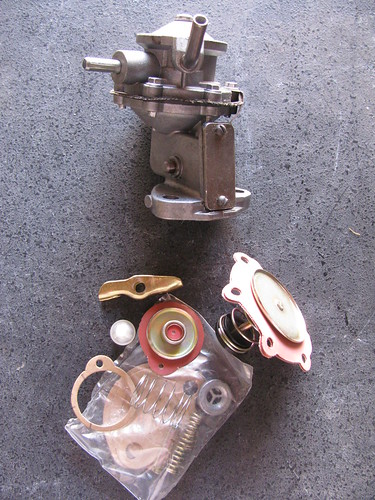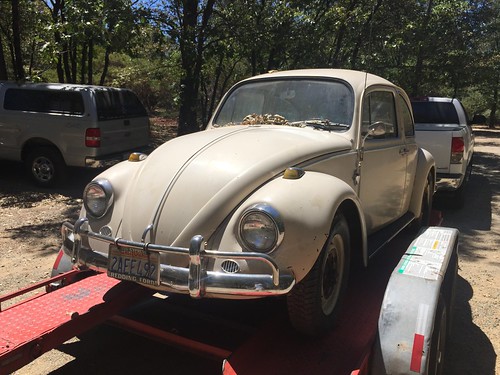I went through four fuel pumps in less than four months. During that time, I found out far more about fuel pumps than I have ever wanted to know, but no matter - here's a short history, and a reason why you want to keep one on hand.
My first pump died after being installed 8 years ago. I was camping, and it just crapped out after so much use. It looked like this:
Fuel Pump #1

So I replaced it while camping - its very easy to do, two screws and two fuel lines. 10 mm bolts and a screw driver. Easy. Less than a month later, it died - apparently the spring installed on the interior was not aligned correctly and the return valve got locked shut by a spring that wouldn't move. I didn't find that out till later.
It looked like this:
Fuel Pump #2

I was near a VW shop when my second fuel pump died, so I replaced it with a used one that came with no promises, and no expectations. It died on the way home from another camp out less than three weeks later. This time I had a replacement that I was expecting to put one when I got home - and here is where I start the cautionary tale.
The fuel pump died on the freeway, I was able to pull over to a safe place and open the engine compartment. As I was removing the fuel lines and clamping them. This piece fell out:
Fuel Pump #3

It fell, I didn't pull on it, it just... dropped. So let's think about that for a moment. If it didn't die, the piece would have just eventually fallen out - giving me the opportunity to make the most of my insurance plan.
I replaced it with another one that looks like my first one(see Number 1 above), but with a few modifications...
So let's walk through fuel pumps. There are three types as show here:

Top to bottom, the three types are post 1971, pre-1971 single-carb (the one in the picture is a cheap copy) and pre-1971 dual carb.
Almost all the fuel pumps these days are made by Brosol - run by two brothers in Brazil, they are the only game in town and to be honest, they don't give a crap about quality (according to three suppliers that I know).
Let's ignore the fact that I don't want an electric fuel pump, move on.
The pre-1971 pumps have more moving parts, they can be repaired, and the repair kits are almost as expensive as the pump itself. See here:

The post 1971 (the brass colored ones) have fewer moving parts, can't be repaired, and don't have the option of a part falling off and allowing fuel to spray all over the inside of a hot engine compartment. Based on that fact alone, I'm going to reccommend that you stick with these "newer' ones.
However: The Brosol company has decided to go even cheaper and the metal pump levers (the single most important moving part) with plastic ones. They break, at random, sometimes before they get out of the mechanics garage. If you buy one, inspect the lever at the bottom. If it is plastic, you have two options - find a metal one, or replace it with your old metal one.
To replace it, you need to hammer out the pin, hammer in the new pin, and then find a way to secure the pin since (sigh) the Brosol company has also decided to remove the extra pin space that was used to allow a circlip to hold the pin in place.
I'd take more pictures to explain further, but I think you get the point.
Here's my best tip - keep a spare fuel pump on you.
Good luck.

No comments:
Post a Comment